Sinhalese people
From Wikipedia, the free encyclopedia
| Total population | |
|---|---|
| (Greater than 18 Million) | |
| Regions with significant populations | |
(2012)[1] | |
| ~150,000 (2010)[2] | |
| More than 100,000[3] | |
| more than 80,738 (2008)[4] | |
| more than 70,000 (2016)[5] | |
| 100,000(2016)[6][unreliable source?] | |
| 60,000 (2016)[7] | |
| 25,000 (2016)[8] | |
| 30,257 (2016)[9] | |
| At least -55,000[10][11] | |
| Languages | |
| Sinhalese, English | |
| Religion | |
The Sinhalese (Sinhala: සිංහල ජාතිය Sinhala Jathiya, also known as Hela or Sinhale) are an Indo-Aryan ethnic group native to the island of Sri Lanka.[12] They constitute 75% of the Sri Lankan population and a number greater than 15 million.[1] The Sinhalese identity is based on language, historical heritage and religion. The Sinhalese people speak the Sinhalese language, an Indo-Aryan language, and are predominantly Theravada Buddhists,[13] although a small percentage of Sinhalese follow branches of Christianity. The Sinhalese are mostly found in North central, Central, South, and West Sri Lanka. According to Mahavamsa and Dipavamsa, written by Buddhist monks of the Anuradhapura Maha Viharaya in Sri Lanka, around the 3-5th century, an ancient treatise written inPali, the Sinhalese are descendants of the settlers who came to the island in 543 BCE from Sinhapura in India, led by Prince Vijaya.[14]
Contents
[hide]Etymology[edit]
From the Sanskrit word Simhala, meaning literally "of lions".[15] Other Sanskrit meaning is 'Sinha'(lion) 'la'(blood or heart).
The Mahavamsa records the origin of the Sinhalese people and the related historical events. Mahavamsa traces historical origin of Sinhalese people back to the first king of Sri Lanka, Vijaya, who is the grandson of Sinhabahu (Sanskrit meaning 'Sinha'(lion), 'bahu'(hands,feet), the ruler of Sinhapura. According to Mahavamsa, Sinhabahu was the son of princess Suppadevi of the Vanga, who copulated with the king of the beast, a lion, (there is no clear reference in the original text whether it was a lion or a man with lion-like features) and gave birth to a daughter called Sinhasivali and to a son, Sinhabahu,[16] whose hands and feet were like the paws of a lion and who had the strength of a lion. KingVijaya, lineage of Sinhabahu,according to Mahavamsa and other historical sources, arrived to the island of Tambapanni (Sri Lanka), and gave origin to the lion people, Sinhalese.
The story of the arrival of Prince Vijaya to Sri Lanka, and the origin of the Sinhalese people is also depicted in Ajanta caves in a mural of cave number 17.
History[edit]
| Historical population | ||
|---|---|---|
| Year | Pop. | ±% |
| 1881 | 1,846,600 | — |
| 1891 | 2,041,200 | +10.5% |
| 1901 | 2,330,800 | +14.2% |
| 1911 | 2,715,500 | +16.5% |
| 1921 | 3,016,200 | +11.1% |
| 1931 | 3,473,000 | +15.1% |
| 1946 | 4,620,500 | +33.0% |
| 1953 | 5,616,700 | +21.6% |
| 1963 | 7,512,900 | +33.8% |
| 1971 | 9,131,300 | +21.5% |
| 1981 | 10,979,400 | +20.2% |
| 1989 (est.) | 12,437,000 | +13.3% |
| 2001 | 13,876,200 | +11.6% |
| 2011 | 15,173,820 | +9.4% |
| 2001 Census was only carried out in 18 of the 25 districts. Source:Department of Census & Statistics[17] Data is based on Sri Lankan Government Census. | ||
Pre History[edit]
The folklore of the Sinhalese people also speaks of many royal dynasties prior to the Sinhala royal dynasties: Manu, Tharaka,Ravana Mahabali[citation needed]etc.
Ancient history[edit]
See also: House of Vijaya and Prince Vijaya
Early recorded history of the Sinhalese is chronicled in two documents, the Mahavamsa, written in Pāli around the 4th century CE, and the much later Culavamsa (probably penned in the 13th century CE by the Buddhist monk Dhammakitti). These are ancient sources which cover the histories of the powerful ancient Sinhalese kingdoms of Anuradhapura andPolonnaruwa which lasted for 1500 years. The Mahavamsa describes the existence of fields of rice and reservoirs, indicating a well-developed agrarian society.
Early kingdoms[edit]
Main articles: Kingdom of Tambapanni and Kingdom of Upatissa Nuwara
Prince Vijaya and his 700 followers left Suppāraka,[18] landed on the island at a site believed[by whom?] to be in the district of Chilaw, near modern-day Mannar, and founded the Kingdom of Tambapanni.[19][20] It is recorded the Vijaya made his landing on the day of Buddha's death.[21] Vijaya claimed Tambapanni his capital and soon the whole island come under this name. Tambapanni was originally inhabited and governed by Yakkhas, having their capital at Sirīsavatthu and their queen Kuveni.[22] According to the Samyutta Commentary, Tambapanni was one hundred leagues in extent.
After landing in Tambapanni Vijaya met Kuveni the queen of the Yakkhas, who was disguised as a beautiful woman but was really a 'yakkini' (devil) named Sesapathi.[23]
At the end of his reign, Vijaya, having trouble choosing a successor, sent a letter to the city of his ancestors, Sinhapura, in order to invite his brother Sumitta to take over the throne.[24] However, Vijaya had died before the letter had reached its destination, so the elected minister of the people[25] Upatissa, the Chief government minister or prime minister and leading chief among the Sinhalese became regent and acted as regent for a year. After his coronation, which was held in the Kingdom of Tambapanni, he left it, building another one, bearing his own name. While he was king, Upatissa established the new capital Upatissa Nuwara, in which the kingdom was moved to from the Kingdom of Tambapanni. When Vijaya's letter arrived, Sumitta had already succeeded his father as king of his country, and so he sent his son Panduvasdeva to rule Upatissa Nuwara.[24]
Upatissa Nuwara was seven or eight miles further north of the Kingdom of Tambapanni.[19][20][26] It was named after the regent king Upatissa, who was the prime minister of Vijaya, and was founded in 505 BC after the death of Vijaya and the end of the Kingdom of Tambapanni.
Anuradhapura[edit]
Main article: Anuradhapura Kingdom
In 377 BC, King Pandukabhaya (437–367 BC) moved the capital to Anuradhapura and developed it into a prosperous city.[27][28] Anuradhapura (Anurapura) was named after the minister who first established the village and after a grandfather of Pandukabhaya who lived there. The name was also derived from the city's establishment on the auspicious asterism called Anura.[29] Anuradhapura was the capital of all the monarchs who ruled from the dynasty.[30]
Medieval history[edit]
See also: Medieval history of Sri Lanka
During the middle ages Sri Lanka was well known for its agricultural prosperity under the Parakramabahu in Polonnaruwa during which period the island was famous around the world as the rice mill of the east. Later in the 13th century the country's administrative provinces were divided into three independent kingdoms: Kingdom of Sitawaka, Kingdom of Kotte and the Kandyan kingdom.[31] The invasion by Magha in the 13th century led to migrations by the Sinhalese to areas not under his control. This migration was followed by a period of conflict among the Sinhalese chiefs who tried to exert political supremacy. Parakramabahu VI in the 15th century was the only Sinhalese king during this time who could bring back the unity of the whole island. Trade also increased during this period, as Sri Lanka began to trade Cinnamon and a large number of Muslim traders were bought into the island.[32]
In the 15th century a Kandyan Kingdom formed which divided the Sinhalese politically into low-country and up-country.[32]
Modern history[edit]
The Sinhalese have a stable birth rate and a population that has been growing at a slow pace relative to India and other Asian countries.
Culture[edit]
Main article: Culture of Sri Lanka
Sinhalese culture is a unique one dating as far back as 2600 years and has been nourished by Theravada Buddhism. Its main domains are sculpture, fine arts, literature, dancing, poetry and a wide variety of folk beliefs and rituals traditionally. Ancient Sinhalese stone sculpture and inscriptions are known worldwide and is a main foreign attraction in modern tourism. Sigirirya is famous for its frescoes. Folk poems were sung by workers to accompany their work and narrate the story of their lives. Ideally these poems consisted of four lines and, in the composition of these poems, special attention had been paid to the rhyming patterns. Buddhist festivals are dotted by unique music using traditionally Sinhala instruments. More ancient rituals like tovils (devil exorcism) continue to enthral audiences today and often praised and admired the good and the power of Buddha and gods in order to exorcise the demons.
Dress[edit]
Traditionally during recreation the Sinhalese wear a sarong (sarama in Sinhala). Men may wear a long-sleeved shirt with the sarong, while women wear a tight-fitting, short-sleeved jacket with a wrap-around called the cheeththaya. In the more populated areas, Sinhalese men also wear Western-style clothing — wearing suits while the women wear skirts and blouses. For formal and ceremonial occasions women wear the traditional Kandyan (Osaria) style, which consists of a full blouse which covers the midriff completely, and is partially tucked in at the front. However, modern intermingling of styles has led to most wearers baring the midriff. The Kandyan style is considered as the national dress of Sinhalese women. In many occasions and functions, even the saree plays an important role in women's clothing and has become the de facto clothing for female office workers especially in government sector. An example of its use is the uniform of air hostesses of Sri Lankan Airlines.[33]
Cuisine[edit]
Main article: Sinhalese cuisine
Sinhalese cuisine is one of the most complex cuisines of South Asia. Due to its proximity to South India, the cuisine of Sinhalese shows some influence, yet is in many ways quite distinct. As a major trade hub, it draws influence from colonial powers that were involved in Sri Lanka and by foreign traders. Rice, which is consumed daily, can be found at any occasion, while spicy curries are favourite dishes forlunch and dinner.[34] Some of the Sri Lankan dishes have striking resemblance to Kerala cuisine, which could be due to the similar geographic and agricultural features with Kerala. A well-known rice dish with Sinhalese is Kiribath, meaning "Milk Rice." In addition to sambols, Sinhalese eat "Mallung", chopped leaves mixed with grated coconut and red onions. Coconut milk is found in most Sri Lankan dishes to give the cuisine its unique flavour.
Sri Lanka has long been renowned for its spices. The best known is cinnamon which is native to Sri Lanka. In the 15th and 16th centuries, spice and ivory traders from all over the world who came to Sri Lanka brought their native cuisines to the island, resulting in a rich diversity of cooking styles and techniques. Lamprais rice boiled in stock with a special curry, accompanied by frikkadels (meatballs), all of which is then wrapped in a banana leaf and baked as a Dutch-influenced Sri Lankan dish. Dutch and Portuguese sweets also continue to be popular. British influences include roast beef and roast chicken. Also, the influence of the Indian cooking methods and food have played a major role in what Sri Lankans eat.
The island nation's cuisine mainly consists of boiled or steamed rice served with curry. This usually consists of a "main curry" of fish or chicken, as well as several other curries made with vegetables, lentils and even fruit curries. Side-dishes include pickles, chutneys and "sambols". The most famous of these is the coconut sambol, made of ground coconut mixed with chilli peppers, dried Maldive fish and lime juice. This is ground to a paste and eaten with rice, as it gives zest to the meal and is believed to increase appetite.
Language and literature[edit]
Main articles: Sinhala language and Sri Lankan literature
The Sinhalese speak Sinhala, also known as "Helabasa"; this language has two varieties, spoken and written. Sinhala is an Indo-Aryan language within the broader group of Indo-European languages.[13] The language was brought to Sri Lanka by the ancestors of the Sinhalese from northern India who settled on the island in the 6th century BCE.[35][36] Sinhala developed in a way different from the other Indo-Aryan languages because of the geographic separation from its Indo-Aryan sister languages. Sinhala was influenced by many languages, prominently Pali, the sacred language of Southern Buddhism, and Sanskrit. Many early Sinhala texts such as the Hela Atuwa were lost after their translation into Pali. Other significant Sinhala texts include Amāvatura, Kavu Silumina, Jathaka Potha and Sala Liheeniya. Sinhala has also borrowed words from other Indian languages and the colonial languages Portuguese, Dutch, and English.[33]
Sandesha Kavyas written by Buddhist priests of Sri Lanka are regarded as some of the most sophisticated and versatile works of literature in the world. The Sinhala language was mainly inspired by Sanskrit and Pali, and many words of the Sinhala language derive from these languages. Today some English words too have come in as a result of the British occupation during colonial times, and the exposure to foreign cultures through television and Hollywood movies. Additionally many Dutch and Portuguese words can be seen in the coastal areas.
Folk tales like Mahadana Muttha saha Golayo and Kawate Andare continue to entertain children today. Mahadana Muttha tells the tale of a fool cum Pundit who travels around the country with his followers (Golayo) creating mischief through his ignorance. Kawate Andare tells the tale of a witty court jester and his interactions with the royal court and his son.
In the modern period, Sinhala writers such as Martin Wickremasinghe and G. B. Senanayake have drawn widespread acclaim. Other writers of repute include Mahagama Sekera and Madewela S. Ratnayake. Martin Wickramasinghe wrote the immensely popular children's novel Madol Duwa. Munadasa Cumaratunga's Hath Pana is also widely known.
Art and architecture[edit]
Main article: Architecture of Sri Lanka
Many forms of Sri Lankan arts and crafts take inspiration from the Island's long and lasting Buddhistculture which in turn has absorbed and adopted countless regional and local traditions. In most instances Sri Lankan art originates from religious beliefs, and is represented in many forms such aspainting, sculpture, and architecture. One of the most notable aspects of Sri Lankan art are caves and temple paintings, such as the frescoes found at Sigiriya, and religious paintings found in temples inDambulla and Temple of the Tooth Relic in Kandy. Other popular forms of art have been influenced by both natives as well as outside settlers. For example, traditional wooden handicrafts and clay pottery are found around the hill country while Portuguese-inspired lacework and Indonesian-inspired Batikhave become notable. It has many different and beautiful drawings.
Developed upon Indo-Aryan architectural skills in the late 6th century BCE Sinhalese people who lived upon greater kingdoms such as Anuradhapura and Polonnaruwa have built so many architectural examples such as Ruwanwelisaya,Jetavanaramaya - second tallest brick building in the ancient world after Pyramid of Giza, and Abayagiriya - third tallest brick building in the ancient world. And also with the ancient hydraulic technology which is also unique to Sinhalese people to build ancient tanks, systematic ponds with fountains moats and Irrigational reservoirs such as Parakrama Samudra, Kawdulla and Kandalama. Sigirya which consider as the 8th wonder of the world is a combination of natural and man made fortress, which consists so many architectural aspects.
Music[edit]
Main article: Music of Sri Lanka
Concerning popular music, Ananda Samarakoon developed the reflective and poignant Sarala gee style with his work in the late 1930s/early 1940s. He has been followed by artists of repute such as Sunil Shantha, W. D. Amaradeva, Premasiri Khemadasa, Nanda Malini, Victor Ratnayake, Austin Munasinghe, T. M. Jayaratne, Sanath Nandasiri, Sunil Edirisinghe, Neela Wickremasinghe, Gunadasa Kapuge, Malini Bulathsinghala and Edward Jayakody.
Film and theatre[edit]
Main article: Cinema of Sri Lanka
Dramatist Ediriweera Sarachchandra revitalised the drama form with Maname in 1956. The same year, film director Lester James Peries created the artistic masterwork Rekavawhich sought to create a uniquely Sinhala cinema with artistic integrity. Since then, Peries and other directors like Vasantha Obeysekera, Dharmasena Pathiraja, Mahagama Sekera, W. A. B. de Silva, Dharmasiri Bandaranayake, Sunil Ariyaratne, Siri Gunasinghe, G. D. L. Perera, Piyasiri Gunaratne, Titus Thotawatte, D. B. Nihalsinghe, Ranjith Lal,Dayananda Gunawardena, Mudalinayake Somaratne, Asoka Handagama, and Prasanna Vithanage have developed an artistic Sinhala cinema. Sinhala cinema is often made colourful with the incorporation of songs and dance adding more uniqueness to the industry.
Performing Arts[edit]
Performing arts of the Sinhalese people can be categorised into few groups:
- Kandyan dance consist of 18 Wannam (dance routines) featuring behaviours of various animals such as elephant,eagle,cobra,monkey,peacock and rabbit,mainly performing in Annual Perahara pegent in Sri Dalada Maligawa Kandy.
- Pahatharata dance have significant dancing style which is using for cure illnesses and spiritual clarification.the main feature in this dances is dancer wear on Masks representing various Gods and Demons.and use elements such as fire and water to bless people.
- Sabaragamuwa dances have also a significant dancing style mainly to entertain people.
- Folk Music and Dances differ according to the casts of Sinhalese people and also some times in regional wise - mainly popular among small children,specially girls.These arts are widely performing during Sinhalese New year period.
Martial arts[edit]
Main article: Sinhalese martial arts
Angampora is the traditional martial art of Sinhalese. It combines combat techniques, self-defence, sport, exercise and meditation.[37] Key techniques observed in Angampora are: Angam, which incorporates hand-to-hand fighting, and Illangam, which uses indigenous weapons such as Velayudaya, staves, knives and swords. Its most distinct feature is the use of pressure point attacks to inflict pain or permanently paralyse the opponent. Fighters usually make use of both striking and grappling techniques, and fight until the opponent is caught in a submission lock that they cannot escape. Usage of weapons is discretionary. Perimeters of fighting are defined in advance, and in some of the cases is a pit.[38][39] Angampora became nearly extinct after the country came under British rule in 1815, but survived in a few families until the country regained the independence.[40]
Science and education[edit]
Main article: Education in Sri Lanka
The Sinhalese have a long history of literacy and formal learning. Instruction in basic fields like writing and reading by Buddhist Monks pre-date the birth of Christ. This traditional system followed religious rule and was meant to foster Buddhist understanding. Training of officials in such skills as keeping track of revenue and other records for administrative purposes occurred under this institution.[41]
Technical education such as the building of reservoirs and canals was passed down from generation to generation through home training and outside craft apprenticeships.[41]
The arrival of the Portuguese and Dutch and the subsequent colonisation maintained religion as the centre of education though in certain communities under Catholic and Presbyterian hierarchy. The British in the 1800s initially followed the same course. Following 1870 however they began a campaign for better education facilities in the region. Christian missionary groups were at the forefront of this development contributing to a high literacy among Christians.[41]
By 1901 schools in the South and the North were well tended. The inner regions lagged behind however. Also, English education facilities presented hurdles for the general populace through fees and lack of access.[41]
Medicine[edit]
Traditional Sinhalese villages in early days had at least one chief Medical personnel called Weda Mahaththaya (Doctor). These people practice their clinical activities by inheritance. The Sinhala Medicine resembles some of Ayurvedic practices in contrast for some treatments they use Buddhist Chantings (Pirith) in order to strengthen the effectiveness.
According to the Mahavamsa, the ancient chronicle, Pandukabhaya of Sri Lanka (437 BC-367 BC) had lying-in-homes and Ayurvedic hospitals (Sivikasotthi-Sala) built in various parts of the country. This is the earliest documentary evidence we have of institutions specifically dedicated to the care of the sick anywhere in the world.[42][43] Mihintale Hospital is the oldest in the world.[44]
Religion[edit]
Main articles: Buddhism in Sri Lanka and Christianity in Sri Lanka
The form of Buddhism in Sri Lanka is known as Theravada (school of elders). The Pali chronicles (e.g., the Mahavansa) claim that the Sinhalese as an ethnic group are destined to preserve and protect Buddhism. In 1988 almost 93% of the Sinhalese speaking population in Sri Lanka were Buddhist.[45] Observations of current religious beliefs and practices demonstrate that Sinhalese as a religious community have complex worldview as Buddhists. Due to the proximity and on some occasions similarity of certain doctrines, there are many areas where Buddhists and Hindus share religious views and practices. This can lead to the opinion that Buddhists have adopted religious elements from Hindu traditions in their religious practices. Some of these practices may relate to ancient indigenous beliefs and traditions on spirits, worship of deities and godlings and some figures appear to demons. Some of these demonic figures are used in healing rituals and may be native to the island.[33][46][47]
Prominent Sri Lankan anthropologists Gananath Obeyesekere and Kitsiri Malalgoda used the term "Protestant Buddhism" to describe a type of Buddhism that appeared among the Sinhalese in Sri Lanka as a response to Protestant Christian missionaries and their evangelical activities during the British colonial period. This kind of Buddhism involved emulating the Protestant strategies of organising religious practices. They saw the need to establish Buddhist schools for educating Buddhist youth and organising Buddhists with new organisations such as the Young Men's Buddhist Association, as well as printing pamphlets to encourage people to participate in debates and religious controversies to defend Buddhism.[48]
There is a significant Sinhalese Christian community, in the maritime provinces of Sri Lanka.[33] Christianity was brought to the Sinhalese by Portuguese, Dutch, and British missionary groups during their respective periods of rule.[49] Sinhalese Christians mainly follow Roman Catholicism, followed by Protestantism.[45] Their cultural centre is Negombo.
Religion is considered very important among the Sinhalese. According to a 2008 Gallup poll, 99% of Sri Lankans considered religion an important aspect of their daily lives.[50]
Geographic distribution[edit]
Sri Lanka[edit]
Within Sri Lanka the majority of the Sinhalese reside in the South, Central, Sabaragamuwa and Western parts of the country. This coincides with the largest Sinhalese populations areas in Sri Lanka. Cities with a > 90% population include Hambantota, Galle, Gampaha, Kurunegala,Monaragala, Anuradhapura and Polonnaruwa.[51]
| Province | Sinhalese People | % Province | % Sinhalese People |
|---|---|---|---|
| 1,687,199 | 66.00% | 11.11% | |
| 359,136 | 23.15% | 2.36% | |
| 32,331 | 3.05% | 0.21% | |
| 1,143,607 | 90.90% | 7.53% | |
| 2,030,370 | 85.70% | 13.38% | |
| 1,657,967 | 86.40% | 10.92% | |
| 2,340,693 | 94.96% | 15.42% | |
| 1,017,092 | 80.80% | 6.70% | |
| 4,905,425 | 84.26% | 32.32% | |
| Total | 15,173,820 | 74.80% | 100.00% |
Diaspora[edit]
Main article: Sri Lankan diaspora
Sinhalese people have emigrated out to many countries for a variety of reasons. The larger diaspora communities are situated in theUnited Kingdom, Australia, United States and Canada among others. In addition to this there are many Sinhalese, who reside in theMiddle East, Southeast Asia and Europe, temporarily in connection with employment and/or education. They are often employed as guest workers in the Middle East and professionals in the other regions.
The largest population centres of Sinhalese people are mainly situated in Europe, North America and Australia. The city of Melbournecontains just under half of the Sri Lankan Australians. The 2011 census recorded 86,412 Sri Lanka born in Australia. There are 73,849 Australians (0.4 of the population) who reported having Sinhalese ancestry in 2006. The Sinhalese language was also reported to be the 29th-fastest-growing language in Australia (ranking above Somali but behind Hindi and Belarusian). Sinhalese Australians have an exceptionally low rate of return migration to Sri Lanka. In the 2011 Canadian Census, 7,220 people identified themselves as of Sinhalese ancestry, out of 139,415 Sri Lankans.[52] There are a small amount of Sinhalese people in India, scattered around the country, but mainly living in and around the northern and southern regions.[53] Sri Lankan New Zealanders comprised 3% of the Asian population of New Zealand in 2001.[54] The numbers arriving continued to increase, and at the 2006 census there were over 7,000 Sri Lankans living in New Zealand. The Sinhalese number about 12,000 in the U.S.[55] The New York City Metropolitan Area contains the largest Sri Lankan community in the United States, receiving the highest legal permanent resident Sri Lankan immigrant population,[56] followed by Central New Jersey and the Los Angeles metropolitan area. Many Sinhalese have migrated to Italy since the 1970s. Italy was attractive to the Sinhalese due to perceived easier employment opportunities and entry, compared to other European countries. It is estimated that there are 30,000-33,000 Sinhalese in Italy. The major Sinhalese communities in Italy are located in Lombardia (In the districts Loreto and Lazzaretto), Milan, Lazio, Rome, Naples, andSouthern Italy (Particularly Palermo, Messina and Catania). Though Sinhala people in particular and Sri Lankans in general have migrated to the UK over the centuries beginning from the colonial times, the number of Sinhalese people in the UK cannot be estimated accurately due to inadequacies of census in the UK. The UK government does not record statistics on the basis of language or ethnicity and all Sri Lankans are classified into one group as Asian British or Asian Other.
Ethnic origins[edit]
Folklore and national mythology[edit]
According to the Mahavamsa, the Sinhalese are descended from the exiled Prince Vijaya and his party of seven hundred followers who arrived on the island in 543 BCE. Vijaya and his followers were said to have arrived in Sri Lanka after being exiled from the city of Sinhapura in West Bengal, East India. The modern Sinhalese people as said in the Mahavamsa were found to be most closely related to the people of North-East India (Bengal).[57][58]It is thought throughout Sri Lanka's history, since the founding of the Sinhalese in the 5th century BC that an influx of Indians from North India came to the island. This is further supported from the Sinhalese language being part of the Indo-Aryan language group which consists of other North Indian languages such as Hindi, Bengali and Marathi. Sinhalese derives from the Maharashtri Prakrit, along with Marathi, Konkani and Dhivehi.[59]
Genetic studies[edit]
Main article: Genetic studies on Sinhalese
Modern studies point towards a predominantly Bengali contribution and a minor Tamil and Western Indian (Gujarati) contribution.[60][61][62]
It is debatable whether the Sinhalese population have genetic links to East Asian populations, however due to their close genetic links to Northeast India, there is a likelihood of some traces of East Asian genes among the population.[63][64][65]
See also[edit]
- Aryavarta
- Buddhism in Sri Lanka
- Indo-Aryan peoples
- Indo-Aryan migration
- Dasa
- Kshatriya
- Proto-Indo-Europeans
- List of Sinhalese people
- Sinhalese Buddhist nationalism
From Wikipedia, the free encyclopedia
SHARE













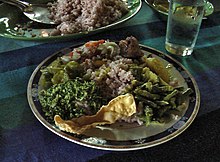




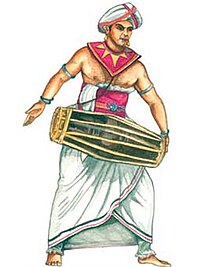



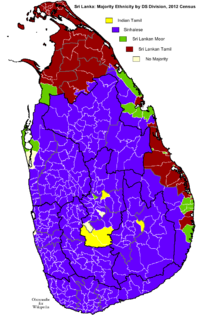
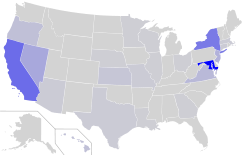
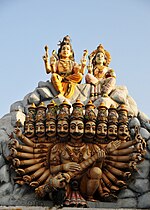

.jpg)
No comments:
Post a Comment